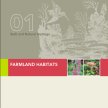
Most of Ireland is farmed in some way, ranging from the intensively managed arable land in the east to small wet fields in the west. Because so much of the land is farmed, Irish wildlife depends heavily on the habitats that exist on farms. A properly managed farm is a good place for wildlife and offers a variety of places in which plants and animals can live.
- Date
- 1 August 2009
- Type
- Book
The ongoing global economic crisis conditions the outlook for dairy, beef, sheep and cereals in 2009. While cost inflation was the main influence on farm margins in 2008, changes in output prices are the main factor behind the story for 2009. Dairy and cereal enterprises will experience the greatest difficulties in 2009 due to substantial decreases in milk and grain prices relative to 2008. Reductions in input expenditure on dairy and cereal farms will be moderate and, as a consequence, negative net margins will be widespread. By contrast, in 2009 output value will decline on beef and sheep enterprises due to falling prices, but margins may actually increase as these output price reductions are more than offset by savings in input expenditure.
- Date
- 1 August 2009
- Type
- Report
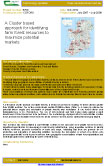
A Cluster based approach for identifying farm forest resources to maximize potential markets - 5700
- Date
- 31 July 2009
- Type
- Technology Update
Situation and Outlook for Irish Agriculture - Mid year update for 2010
- Date
- 1 July 2009
- Type
- Report
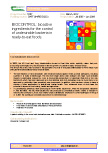
BIOCONTROL: bioactive ingredients for the control of undesirable bacteria in ready-to-eat foods.
- Date
- 30 June 2009
- Type
- Technology Update
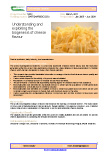
Understanding and exploiting the biogenesis of cheese flavour
- Date
- 30 June 2009
- Type
- Technology Update
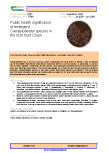
Public health significance of emergent Campylobacter species in the Irish food Chain
- Date
- 30 June 2009
- Type
- Technology Update
Supporting sustainable farming and the environment is the main focus for Teagasc’s soil, environment and good farm practice programmes. This will be achieved by providing farmers with the knowledge and skills to operate in a profitable, competitive and sustainable manner and by supporting policymakers in designing, implementing and evaluating environmental programmes targeted to different types of farms addressing issues such as climate change, water quality, biodiversity and soil quality. Emphasis is placed on the achievement of ‘double-dividend’ outcomes, so that future farming can be both commercially and environmentally sustainable.
- Date
- 18 June 2009
- Type
- Submission
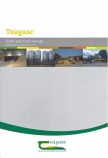
The expansion of both the dairy and beef enterprises is likely in Ireland, in response to a competitive grass-based system. On dairy farms as quota becomes less of a limiting factor and land becomes more limiting, the requirement for low cost supplementary feeding is likely to increase. Likewise, the source of feed becomes more crucial as unit size increases and the demand for value added products from our customers becomes more important. The cost effectiveness of on-farm storage options for feed becomes increasingly attractive as the scale of operation on farms increase.
- Date
- 1 June 2009
- Type
- Report
The National Farm Survey is designed to collect and analyse information relating to farming activities as its primary objective. Information and data relating to other activities by the household are considered secondary and as such where this information is presented it should be interpreted with caution. For 2008 there are 1102 farms included in the analysis, representing 104,800 farms nationally. The population is based on the CSO 2007 Farm Structures Survey with farm typology based on the 2005 Standard Gross Margins (SGM).
- Date
- 1 June 2009
- Type
- Report
